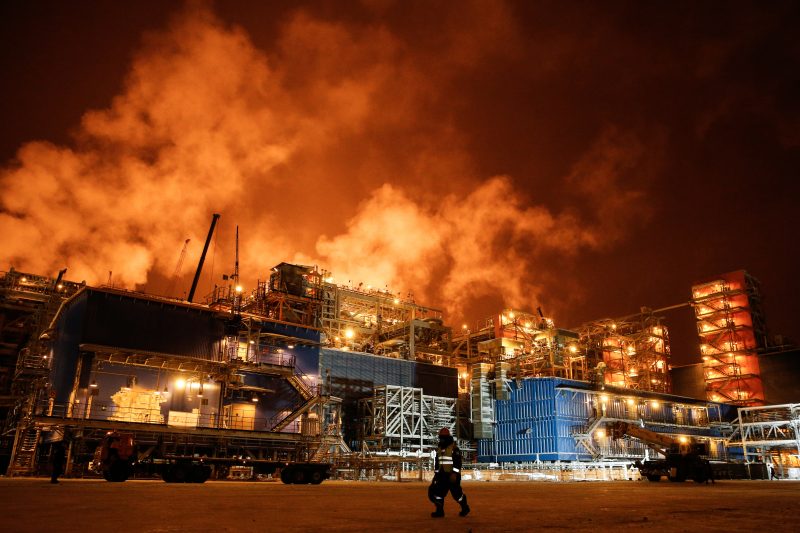Russian economy outpaced expectations in 2018
The construction of giant oil and gas projects was one of the factors that pushed Russia’s economy towards quicker than expected growth last year (Maxim ZMEYEV)
Moscow (AFP) – Russia’s economy expanded 2.3 percent last year, growing more quickly than the government and the IMF had predicted, according to state statistics published Monday.
Russia’s growth rate accelerated from 1.6 percent in 2017 and exceeded the economy ministry’s prediction of 1.8 percent as well as the International Monetary Fund’s forecast of 1.7 percent.
The country’s economy only returned to growth in 2017 after two years of recession in 2015 and 2016.
Russia’s Rosstat statistics agency said that GDP last year was 103.6 trillion rubles ($1.578 trillion, 1.38 trillion euros), with growth in sectors such as hotels and restaurants boosted by hosting the World Cup.
The economy ministry had initially predicted 2.1 percent growth before revising this down to 1.8 percent, taking into account the impact of US sanctions on the ruble.
Strong growth in the construction sector of 5.3 percent was one of the factors that pushed the year’s figures higher than expected.
This was due to large construction projects such as oil and gas facilities and Novatek’s new liquified natural gas plant in the north of Siberia, the economy ministry said.
Novatek is one of Russia’s largest natural gas producers.
The latest figures show that Russia “has made significant upwards revisions” to its quarterly growth figures for the first half of last year, said the London-based Capital Economics research group.
It said the figures suggest that Russia’s growth has already peaked and “will average two percent over 2019 and 1.3 percent in 2020.”
While Russia has turned the corner after the worst recession during Vladimir Putin’s time in power since 2000, the figures are still much lower than the economic goals declared by the Kremlin.
Last year Putin said he wanted his latest four-year term as president from 2018 to 2024 to see four-percent annual growth.
During his election campaign for a fourth term last year, Putin said he wanted to halve the number of people living in poverty and increase GDP per head by 50 percent by 2025, which would require four-percent annual growth.
Russia’s central bank has predicted annual growth of between 1.5 and two percent for the period between 2018 and 2020, calling for structural reforms to diversify the economy.
Disclaimer: This story is published from a syndicated feed. Siliconeer does not assume any liability for the above story. Validity of the above story is for 7 Days from original date of publishing. Content copyright AFP.


